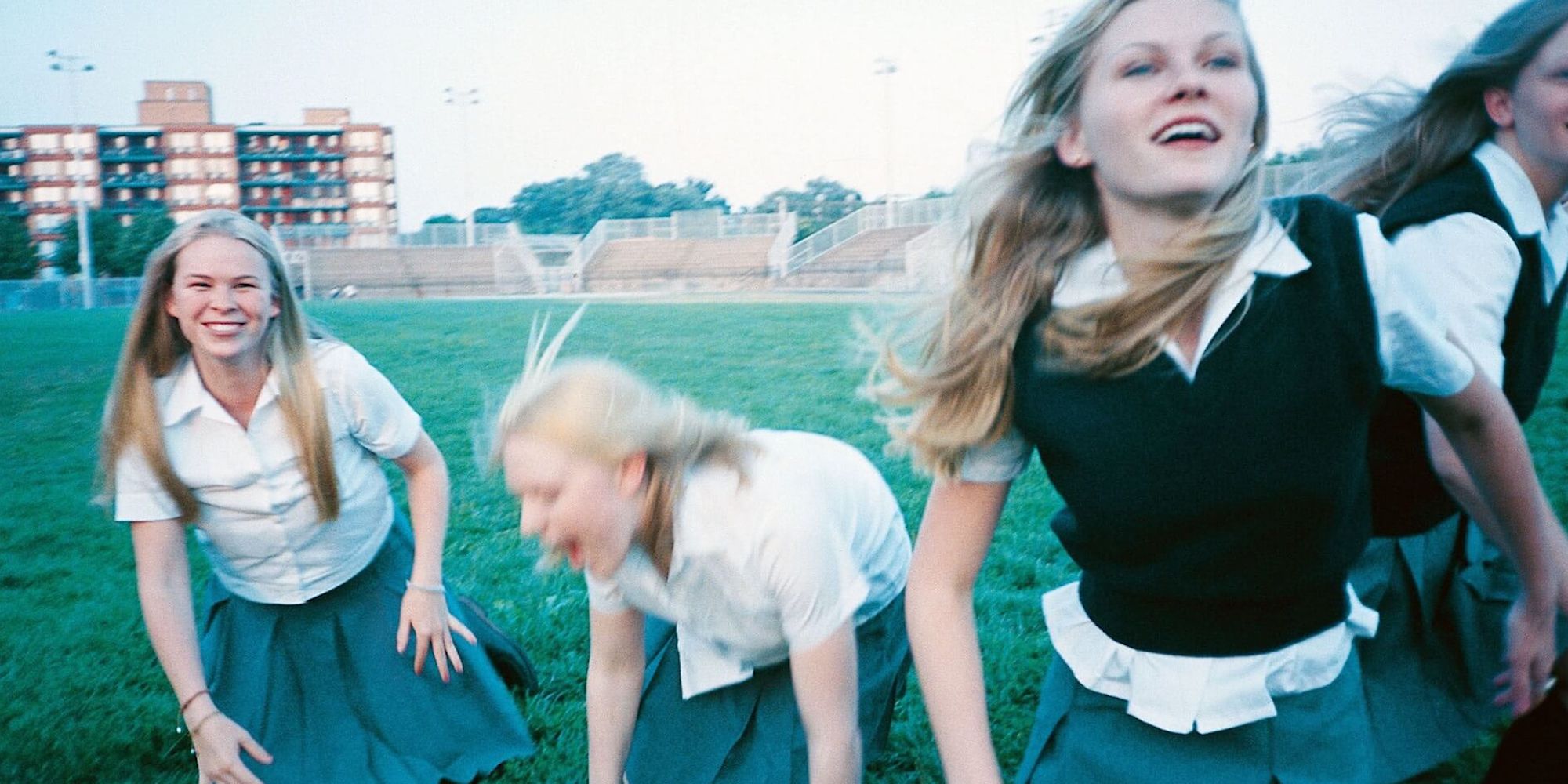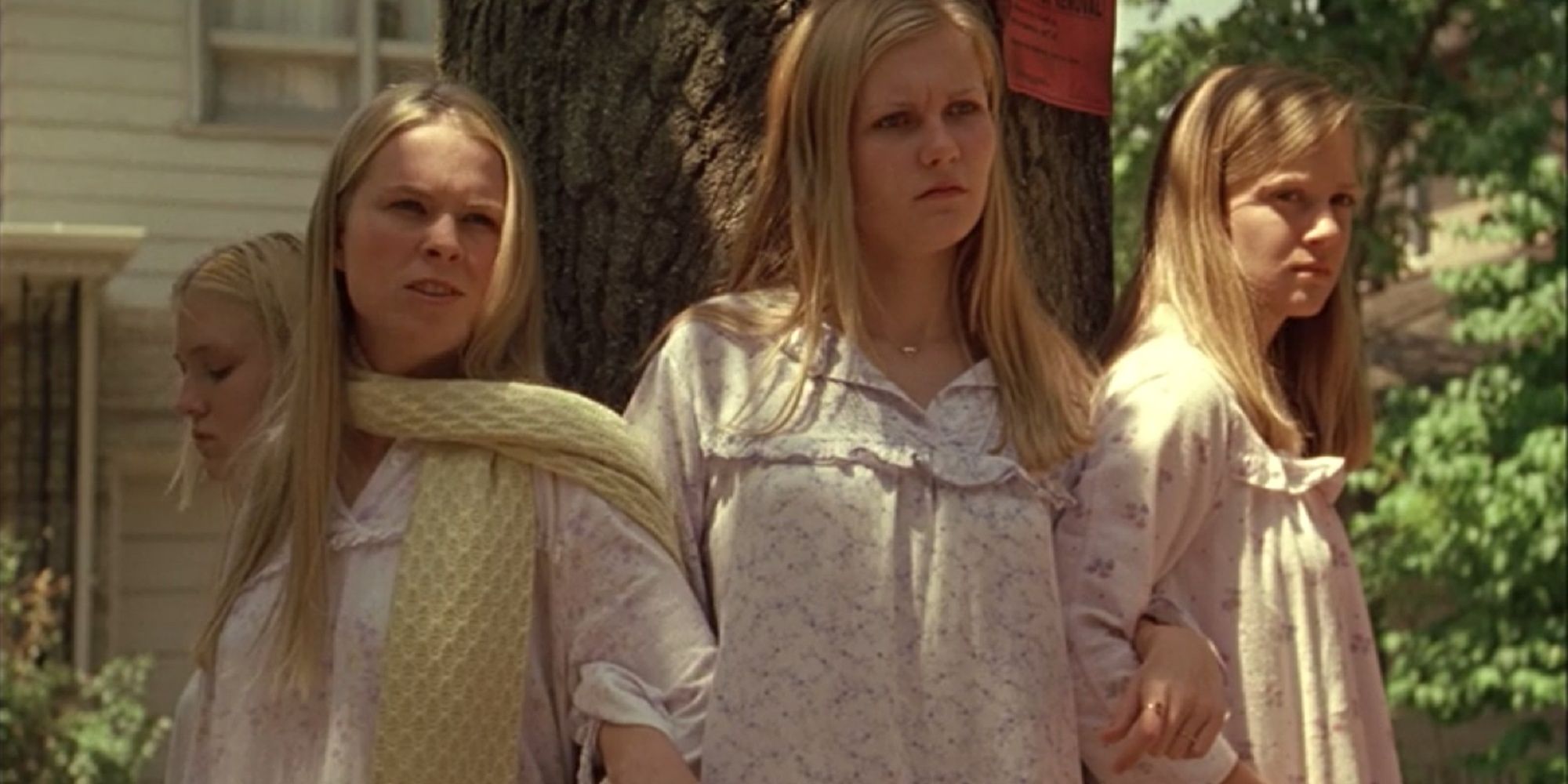In 1999, Sofia Coppola made her directorial debut with The Virgin Suicides, a film adaptation of the novel of the same name, now 30 years old, by Jeffrey Eugenides. Coppola has said that reading the novel helped inspire her to become a director, after seeing and understanding how such a unique story had to be portrayed on the big screen.
Eugenides' novel and Coppola's adaptation are both told by neighborhood boys, now older, reminiscing on the lives and deaths of the Lisbon sisters, who all took their own lives within a year of each other. While recounting the events leading up to the suicides, the narrator or narrators (the novel is narrated through first-person plural, while the film's narrator is first-person singular) puts the many pieces and supposed clues together in an attempt to not only figure out why the girls did what they did but to also learn more about them as human beings.
Coppola's film has since reached cult-classic status. It is impressive how great the adaptation is while also remaining faithful to the source material, with much of the dialogue being used verbatim from the novel. However, there are some key events and characteristics of Eugenides' haunting novel that was left out of the film. These are the three biggest differences between the film and the novel.
The Timing of the Girls' Suicides Differs in the Book and Movie
"She slept late, spoke little, and took six showers a day." The series of events portrayed in the film is almost exactly the same as in the book. However, one of the biggest differences between the two is the ending. In the film, Lux (Kirsten Dunst), Bonnie (Chelse Swain), Mary (AJ Cook), and Therese Lisbon (Leslie Hayman) are found dead in their home a year after their youngest sister Cecilia (Hanna R. Hall) took her own life. This is a different turn from what Eugenides wrote in the 1993 novel. Once the paramedics arrived for the four sisters, they find that 16-year-old Mary has actually survived and stayed in the hospital before arriving home to her parents again. "It was a small bench... The plaque bore the simple inscription 'IN MEMORY OF THE LISBON GIRLS, DAUGHTERS OF THIS COMMUNITY.' Mary was still alive at this point, of course, but the plaque did not acknowledge that fact."
Continuing on in the novel, Mary takes her life in the Lisbon home a month later, the morning after the ill-themed "asphyxiation" debutante party held in the neighborhood, an event that was recounted in the film. Once the paramedics returned to the Lisbons' home for the fifth and final time, Eugenides writes that they did not bother to rush. While the point got across in the film without this, it is intriguing to think about how different the film would have been if it had briefly followed one Lisbon sister in her empty home that had been put up for sale.
Lux Is Taken to the Hospital in the Book But Not the Film
"They were carrying the stretcher, just as we expected, but when the porch light came on we were not prepared for what we saw: Lux Lisbon, sitting up, very much alive." A little more than halfway through the book, around the time 14-year-old Lux had been seen with various men and boys on the roof of her house, the neighborhood witnessed the same EMS truck stopping at the Lisbon house for the third time. Everyone assumed the worst, but instead, Lux is seen being taken out of the house, yelling in pain. It is falsely spread around that she had a burst appendix. Once she makes it to the hospital, it is revealed that it was all a ploy to get out of the house after realizing she had not gotten her period for over a month.
"We never understood why Lux went to the hospital instead of to Planned Parenthood, but most people agreed she was telling the truth and that, in the end, she could devise no other way to see a doctor." While this scene may not have added to what was already present in the film, this moment emphasized how dire the situation at the Lisbon house truly was. The narrators can only assume that the sisters are not being properly fed after seeing their frail appearances, and it is shown in the film as well that they were all pulled out of school and kept inside at all times. In the novel, Lux, who was most likely uncomfortable and unable to seek help from her parents, knew the only solution to her problem was to get herself to a doctor at whatever cost.
It is also a moment that reiterates how these neighbors, especially the boys, did not actually want to put themselves in the girls' shoes. Instead, they just continued to desire and idealize them from afar rather than bother to truly unpack the many reasons why Lux could not have gone to Planned Parenthood. Readers later learn that while she was not pregnant, she was positive for HPV. The doctor also agreed to administer these tests to Lux, a minor, without notifying her parents.
Coppola Left Day of Grieving and the School Therapist Out of the Movie
"Mr. Pulff... recalled a few of Mrs. Woodhouse's words that day. ' 'Grief is natural,' she said. 'Overcoming it is a matter of choice.' I remember it because I used it later for a diet product: 'Eating is natural. Gaining weight is your choice.' ' While the film briefly covers the school's attempt to start a discussion about Cecilia's suicide, Coppola decides to leave out a specific school event called the Day of Grieving. On one day of the school year, without warning, teachers keep students in their homerooms and are responsible for starting a sensitive discussion in any way they saw fit.
The Lisbon sisters, in different classrooms, decline to participate and ultimately find each other in the girls' bathroom, waiting for the end of the Day of Grieving in silence. This moment in the book emphasizes the idea that many people in the small town are seemingly concerned with stopping the "spread" of suicides as opposed to feeling concerned for the Lisbon girls themselves. No one in the faculty directly discusses the Day of Grieving with Mr. Lisbon (James Wood) either, who is a teacher at the school himself.
After the Day of Grieving, the school brings in a psychological counselor named Miss Lynn Kilsem. While it is later found out that her social work degree is fake, four of the Lisbon sisters are seen frequenting her office. "The window would sometimes be open, and both Lux and Miss Kilsem would be smoking against the rules or the girls would have raided the candy dish, strewing Miss Kilsem's desk with wadded paper." While the readers and narrators will never be sure if the girls were truly confiding in Miss Kilsem, it is observed that they seemed more present and attentive in school. On the other hand, the film does not attribute a specific event to their bettering mood, except potentially when Trip Fontaine (Josh Harnett) and his friends ask them to the homecoming dance, which ultimately becomes the end of their already-limited freedom.
It is important to note that Coppola proved her great understanding of the source material through her extremely complex and through-provoking adaptation. While not including more memorable atmospheric elements of the book, such as the dreaded fish fly season, the tone of small-town suffocation was still achieved. However, it is interesting to think about what could have been when it comes to the prominent scenes from Eugenides' novel that were not included in the film.




